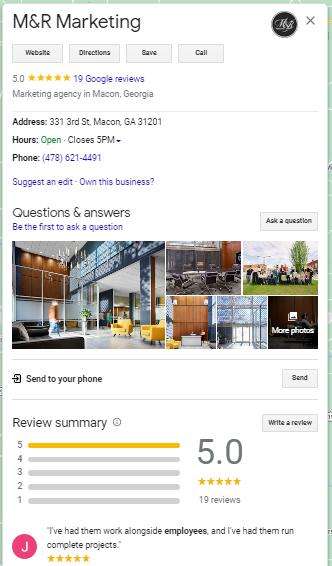
Gone are the days when companies relied solely on traditional advertisements to reach their target audience, although traditional advertising is far from dead. The birth of GPS-enabled cell phones and the Internet Protocol (IP) address allowed location-based marketing to become a reality. Location-based marketing uses your target audience’s physical location to serve relevant marketing material.
It’s not a complete shoo-in for the advertiser, however. The potential customer must allow the app that is serving the ads to track their physical location. So, how can an advertiser respect a customer’s privacy while simultaneously reaping the benefits of location-based marketing? Allow us to provide helpful tips.
1. Utilize Geofencing
Geofencing refers to the marketing tool that allows the advertiser to put a virtual fence around a location, ranging from a single street address to statewide. The technology uses a customer’s GPS or IP address to identify when they’ve crossed the virtual fence. From there, the ad can be served to them on their cell phone or other mobile devices.
We just wrote a stellar blog series all about geofencing. You can check it out here:
2. Prioritize Social Media Marketing
Meet your target audience where they’re at. We’re willing to promise they’re on one or more social media platforms. Via ads or boosted posts, you can show up in your target audience’s newsfeed with a solution to their problem. Your ad has piqued their interest, so they click on it. They check out your social media page, where you consistently post helpful and entertaining content. They like and follow your page. Over time, you can establish yourself as a leader in your industry via your ads and posts. You can turn your target audience into loyal customers.
3. Implement Local SEO via Google My Business
If you haven’t created a Google My Business (GMB) profile yet, stop what you’re doing and do it right now. Google My Business profiles are essential for businesses that have a brick-and-mortar location or if you service a specific area. To optimize your location-based marketing through GMB, make sure you:
- Add photos to your GMB profile
- Ensure your details are correct
- Address
- Business name
- Hours of operation
- Phone number
- Make posts daily or weekly via your GMB profile
- Request and respond to all reviews
When your local target audience searches keywords related to your industry on Google, your GMB profile should auto-populate. Check out a snippet of our Google My Business Profile.

4. Combine Geotargeting & PPC
What is geotargeting? When you implement geotargeting into your marketing efforts, you can specify the exact location you want your ads to be displayed. You can determine which ad shows up based on geographic locations.
What is PPC? PPC stands for pay-per-click. It’s exactly what it sounds like – an advertiser will pay a fee every time someone clicks on their ad.
When you implement geotargeting in your PPC campaigns, you are reducing waste spending due to increasing the likelihood of your ad being pushed to local, interested parties.
5. Focus on the Bottom of the Funnel Content
Your target audience is in a funnel, figuratively. They may start at the top, beginning their consumer journey by researching their problem. Then they head to the middle, where they know what their problem is, and they’ve identified solutions. The bottom of the funnel is the people in your target audience who are ready to act. For example, consider a small business owner who wants to get better at social media advertising:
- Top of the funnel – A small business owner researches “how to DIY social media advertising”.
- Middle of the funnel – A small business owner researches “Facebook ads vs. LinkedIn ads”.
- Bottom of the funnel – A small business owner researches “marketing company near me”.
You must show up when your target audience is at the bottom of the funnel. You can accomplish this by dominating Google with high-intent keywords and SEO. Remember, your content should be written FOR people with keywords in mind, not the other way around.
6. Strengthen Your Standing as an Industry Leader
Picture this – Your location-based marketing efforts work, and your target audience is staring at your awesome ad right now. They want to learn more about your company, so they check out your website and social media platforms. What do they see? Will they find that you’ve consistently posted helpful posts on social media? Will they see an FAQ page on your website that answers questions about your industry, product, or service they didn’t even know they had?
Every platform you have – your social media, website, GMB profile, landing pages, or the like – should contribute to your standing as an industry leader. If it doesn’t offer comprehensive information (or worse, it offers inaccurate information), it will do more harm than good. We can help.
7. Respect Your Audience’s Privacy
Your location-based marketing should not invade your audience’s privacy. Meet them where they are (digitally) with information they want to see. Don’t overwhelm your audience with ads or invade their privacy, as this will deplete their trust in your company and force them to look elsewhere for a solution to their problem.
Partner With Us For Your Location-Based Marketing Needs! Call us at 478-621-4491
We’ve been obsessing over geofencing and location-based marketing. Are you ready to start researching it yourself? Check out our recent blog articles:
- How to Use Geofencing to Capture Quality Leads
- Geofencing 101: The Essential Guide to Location-Based Marketing
- Immediate Benefits of Geofencing Advertisements
- Do Geofencing Ads Work? How to Track and Understand Campaign Performance
- Practical Examples of Location-Based Marketing Campaigns for Your Business
Did you love this article? Make sure you sign up for our monthly eNewsletter, so you never miss one again.

